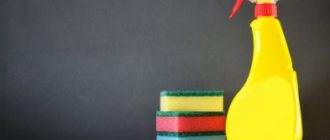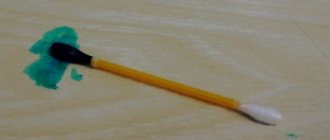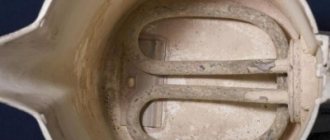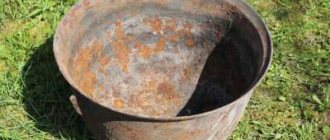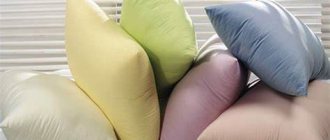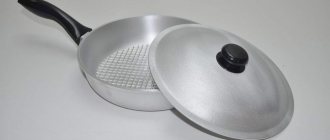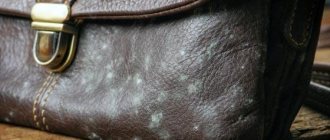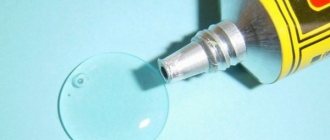It is very easy to get your hands dirty with resin, pine or epoxy. The viscous composition tends to harden quickly in air.
This raises the problem of how to wipe the resin off your hands thoroughly and safely. Proven home recipes and household chemicals that act as solvents come to the rescue.
If you are interested in how to remove resin from your hands, read this article.
How to remove epoxy?
Depending on the composition, epoxy resin has a different curing period . The high degree of polymerization and hardening within a few hours require action to be taken as early as possible.
The longer the resin remains on the skin, the higher the risk of developing irritation and allergies.
Folk remedies
The sooner measures are taken to remove the adhesive mass from your hands, the better for the skin, and the easier and faster the cleansing will be. You can use the products you have at home.
Baby cream
A neutral, hypoallergenic and fairly greasy baby cream is a suitable product for quickly removing tarry mass from hands.
The procedure for use is not complicated:
- Apply the product to the skin and distribute over the stain and areas of skin nearby.
- Using a napkin, soft brush or sponge, rub the area vigorously, trying to remove as much resin as possible.
- Repeat application and wiping.
- Wash your hands with soap.
Soda
Baking soda is an affordable product that can almost always be found in the kitchen. Preparation of the cleaning composition includes:
- pour 3 tsp into a bowl. soda;
- pour in 1 tbsp. l. water;
- stir to a paste;
- apply to the stained area of the hands;
- using a brush or napkin, treat from the edges of the stain to the center;
- wash off with soap;
- wipe your hands;
- apply nourishing cream.
Coca-Cola and soda
You can use cola and soda to dissolve the resin. The effect of the drink is explained by the presence of orthophosphoric acid and carbon dioxide. Baking soda powder will complement the effect.
Procedure:
Pour Coke (1 liter) into a bowl.- Add 1 tbsp. l. soda
- Mix.
- Dip your hands into the solution so that it covers the areas stained with resin.
- Leave for 10 minutes.
- Wash your hands with soap and a washcloth.
- Wipe your hands.
- Apply with softening nourishing cream.
Household chemicals
Household chemicals that can help remove resin should be used with caution.
The best effect is achieved if you start washing your hands before the resin has hardened.
White Spirit
Hand treatment procedure:
- moisten a napkin or sponge with white spirit;
- rub the stained area of skin;
- Using a brush and laundry soap, wash off any remaining resin;
- lubricate your hands with cream.
If the resin has dried, it will take longer and be more difficult to wash it off. The cost of the product is from 80 rubles per liter.
Petrol
To clean off uncured epoxy, you can use refined gasoline. The well-known solvent “Galosha” is suitable for everyone.
Sequencing:
- Moisten the sponge with gasoline.
- Rub the stained area.
- Prepare a weak alkaline solution from 1-2 tbsp. l. soda per liter of water.
- Rinse your hands with an alkaline solution.
- Apply nourishing cream to your hands.
Gasoline "Galosha" costs from 150 rubles per 1 liter.
Acetone
Exposure to acetone is a fairly aggressive method that should only be used as a last resort. Or if other methods are ineffective.
Acetone can be used as a solvent as follows:
- soak the sponge with acetone;
- rub the stained area so that the resin comes off;
- wash your hands with soap;
- apply a rich cream to soften the skin.
The price of a large package of technical acetone (10 l) is 800 rubles. Available in packaging of various sizes.
Dried resin on hands - how to wash it off?
Renovation work is very exciting, especially for hardworking men. And often resin stains on the skin of the hands are found already in a hardened form, which can be tried to be washed off in several ways.
- Ice cubes. If you are at home, you can use a cube or piece of ice from the freezer. Rub the dirt vigorously with ice and wait. Under the influence of cold, the glue will dry quickly, and it can be carefully removed from your hands, for example, with the blunt side of a knife.
- Oily liquids. Spread the resin stain with a thick layer of oil: sunflower, olive, cosmetic. As an option, high-fat mayonnaise is sometimes used. Periodically rub the oily substance into the epoxy stain. Then you can try to remove the softened resin from the skin with gentle movements.
- Solvent. Both for hardened stains and for fresh smears of glue, a solvent or various alcohols are used: denatured alcohol, wine alcohol, ammonia, etc.
The question of how to wash off epoxy resin that gets on the skin is far from idle. Not all solvents are used to remove chemicals from hands. Some leave burns, others cause allergens that can trigger eczema. Allergy sufferers should be especially careful when using chemicals.
Be sure to read:
We suggest you read: How to clean an automatic washing machine with vinegar to remove scale and unpleasant odors?
How to dissolve silicone: effective ways to remove sealant from various surfaces
Those who are not afraid of allergic reactions can wash off the epoxy with a swab soaked in 646 solvent or acetone. You can wipe your hands with these substances to remove residual resin from them. Hands are immediately washed with soap and lubricated with protective cream. Before starting to work with epoxy, it is recommended to lubricate the skin of your hands with a protective cream and wear gloves.
How to clean coniferous (from pine) and wood?
Liquid tree resin is a thick, viscous substance. It can stick to the skin when walking in the forest or while climbing trees. If the stain is not removed immediately, the resin will harden. To remove it, you will need to soften the composition, returning it to its ductility.
Compounds at hand
The following tools will help you deal with tree resin on your hands:
Vegetable oil
Using vegetable oil is a safe and easy way to get your hands in order. This option is suitable for everyone - even those with dry skin and children.
How to use:
- Apply oil to a sponge or tampon.
- Rub the tar stain on your hand for half an hour. During this time, the skin should be completely cleansed.
- Wash your hands in hot water and soap.
You can use regular sunflower oil, which you have in the kitchen, to wipe off the resin.
Alcohol
Alcohol is used to remove large amounts of dirt. It does not irritate the skin and does not harm the body even with prolonged contact, so this method is suitable even for a child.
How to use:
- soak the sponge in alcohol;
- apply to the stained area for 15-20 minutes, making sure that the sponge does not dry out;
- Rub the stain with a piece of gauze.
Rubbing alcohol can be purchased at a pharmacy.
Lemon acid
Food grade citric acid, which comes in powder form, is good for cleaning your hands from tree resin. The effectiveness of the drug occurs due to the presence of acid.
Using the drug is not difficult:
- Wet the sponge with water.
- Dip one edge into the acid powder.
- Rub the stained area.
- Wash off with warm water and soap.
For people with sensitive skin and children, citric acid may cause irritation.
Chemicals
Coniferous and tree resin can be washed off using not only improvised means, but also household chemicals:
Stain remover
Almost any stain remover can be used as a solvent. It is more convenient to use in a liquid form, for example, Vanish.
The product is applied to the stained area and left for a couple of minutes. If the gel drips, you can soak the sponge well with it and apply it to the stain.
After the resin has become viscous, it is cleaned off with a washcloth and hands are washed. Price – from 170 rubles per bottle.
Turpentine
In order to remove a small stain of tree resin from your hands, just a few drops of turpentine are enough . Apply it to the sponge and rub the stained area, making sure that the entire stain is treated. After removing the resin, wash your hands. Price – from 50 rub. for 0.5 l.
Washing powder
You can use any powder, but it is better for washing white clothes. It is applied to the affected area and rubbed vigorously.
With this effect, the resin will form pellets, being removed from the surface of the hands. Complete the treatment by washing your hands and applying nourishing cream .
The cost of Persil washing powder starts from 100 rubles per 450 gram package, but you can choose a detergent that is cheaper.
Prohibited methods
Some products clean resin well, but have a negative effect on the skin. Their use is not recommended.
Hot way
It is effectively used for cleaning clothes, shoes, household items, but not for the skin of the hands or other parts of the body. The resin is ironed through the parchment with a hot iron. At high temperatures, the substance softens and can be removed with a sponge or cloth.
This method should absolutely not be used to remove resin from skin. The result can be quite disastrous: from a minor burn to being admitted to traumatology.
Cold cleaning method
It is also used only for household items. The thing stained with resin is frozen. When exposed to low temperatures, the resin crystallizes. After which it is broken with a hammer. You can, of course, try and carefully rub the dirty area on your hand for several minutes with a piece of ice so that the resin hardens. But the desired crystallized structure of the substance cannot be achieved in this way. But getting mild frostbite on the skin is as easy as shelling pears.
Using a cold method of cleaning resin can cause frostbite to the extremities.
Epoxy Solvents and Acid
Chemicals that are designed to clean epoxy resin - DMSO and DMF - can be bought at any pharmacy. They are used to liquefy and dissolve resins. But none of these solvents can be used to cleanse the skin of the hands, face and other parts of the body from resin.
DMF and DMSO do not corrode metals and do not damage plastics based on non-polar hydrocarbons. But some microcircuit/transistor housings can also swell in them, because they can be made on the basis of epoxy resins, especially old ones. Well, you need to be careful when working with them. DMF by itself is not particularly useful, but DMSO improves the transport of substances soluble in it through the skin, therefore it can promote the absorption of something unwanted by the skin.
pashka000
https://radiokot.ru/forum/viewtopic.php?f=3&t=101246&start=20&view=print
DMSO (dimethyl sulfoxide), was previously sold in pharmacies under the name Dimexide (in my opinion, it was diluted with something). Almost all organic matter will be dissolved. Of the minuses - if it stands in the air for a long time, it oxidizes and stinks, and secondly, it transfers dissolved in it through the skin very well, which is why it is contained in all sorts of rubbings, dolobens, fastumgels, etc. (wear gloves)
Klugman
https://www.radioscanner.ru/forum/topic38626.html
SP-6 remover is also a strong solvent. It is designed to remove varnishes and paints from old ferrous metal; it also cleans epoxy resin. True, SP-6 is used in car service centers and at construction sites. After applying the remover, the paint coating swells, breaking down into a loose mass, which is then removed with a brush.
It is strictly forbidden to use SP-6 remover to clean your hands from resin. If the cleaner comes into contact with your skin, immediately wash your hands or other parts of your body with water. If this is not done, a chemical burn is guaranteed. When using SP-6, a chemical burn to the respiratory tract is also possible. After removing the remover, you should consult a doctor.
It is strictly forbidden to use acid to cleanse body parts of resin. After all, sulfuric and tetrafluoroboric acids form an instant chemical burn when they come into contact with the skin. In this case, coagulation necrosis—tissue death—is formed almost instantly. A white crust with clearly defined boundaries instantly forms on the skin. The stronger the concentration of acids, the deeper the wound under the crust.
Acid contact with the skin can cause serious consequences.
How to wash your baby's skin?
Children's skin is delicate and sensitive. There is no way to clean off drops of resin that accidentally fall on your hands.
The best options for removing tar stains from babies' hands:
- baby cream;
- soda;
- vegetable oil;
- alcohol.
When cleaning children's hands, do not use excessive force, use force or use hard washcloths.
Any intense impact can lead to scratching, irritation and other unpleasant consequences.
What is the main difficulty
Hands are not hair, but to wash them you need to make every effort. A particular difficulty lies in the fact that you need to get rid of contaminants without damaging the skin by choosing the right product.
It is much more difficult to cope with heavy and long-term contamination when the resin has already hardened. Increased safety measures apply to children, since a child's skin is much more delicate than an adult's.
What not to do and why?
When washing your hands from epoxy or wood resin, it is important to follow proven recipes and not use products that can cause harm.
The main prohibitions include:
Using objects with a pronounced abrasive effect - sandpaper and very hard brushes - is likely to damage the skin.- Do not attempt to remove resin stains with a knife, blade or other sharp object. These methods are traumatic and ineffective.
- Do not use strong solvents with which skin contact is not desirable.
- Do not mix several solvents, as the result can be a very caustic composition that is harmful to the skin and respiratory tract.
- Do not try to heat the resin until it becomes viscous, as this method can cause severe burns.
- The freezing method (applying ice to the resin) can be used to a limited extent and with caution, as it can lead to frostbite. It is better to replace it with other methods.
Removing epoxy stains from hands using baking soda
Soda is a fairly common reagent that we often use in our households and everyday life. The main advantage of soda is that even if it comes into contact with the skin for a long time, there will be no burn. The main rule when using soda is to not let your hands and surfaces dry out.
How to prepare a mixture for removing resin using soda:
- Prepare a solution in the proportion of 1 tbsp. spoon of water
- Add to this 3 teaspoons of soda
- Make a paste from the resulting mixture
- Carefully apply the paste to the contact site and the resin itself.
- Removing epoxy resin
- Wash off the mixture with warm water
Recommendations
Advice from experts will help in resolving the issue:
- The use of solvents should be carried out in a well-ventilated area.
- Prolonged skin contact with solvents should be avoided; they should only be applied to the stained area of the skin.
- When removing resin stains, you must avoid spreading the sticky mixture over an even larger area. To avoid this, remove large stains from the edges to the center.
Recipes and tips for removing resin from various surfaces are presented in this section.
Where are resin contaminations most often located?
The most common way to use epoxy resin is as an adhesive. Epoxy glue is an old proven tool for repairing rubber products, shoes, gluing wooden and ceramic surfaces.
In domestic conditions, glue most often gets on unprotected areas of the skin of the hands, as well as on items of clothing. Therefore, it is strongly recommended to work with glue wearing protective gloves and an apron.
If the substance does get on the skin, it is necessary to take immediate action, since synthetic resin is an aggressive chemical and can cause burns to the epidermis, dermatitis, and allergic reactions.
Freezing to Remove Epoxy
In the case of clothes or small items, you can use the freezer. After several hours in the cold, the hardened epoxy stain is easier to pick off with a sharp metal object or crack with a hammer. It is impossible to remove stains from furniture or other large objects, walls, floors, windows and many other surfaces for obvious reasons. In this case, a cold attack can be carried out using special means in aerosol cans
It is important to take precautions here:
- work only in full protective equipment, which includes gloves, goggles, a respirator or mask, and a hat;
- ensure good ventilation of the room in which the refrigerant is used: open windows or turn on forced ventilation;
- do not allow the presence of children, pets, or other persons without personal protective equipment in the premises;
- Do not turn the cylinder horizontally, at an angle or upside down.
The procedure for applying frost from a can is as follows:
We recommend:
DIY dehumidifier for home
- Shake the bottle of refrigerant vigorously;
- spray the composition onto the hardened resin from a distance of 0.3 meters;
- quickly break or pick up the stain with a previously prepared tool.
Non-standard methods for cleaning clothes
You can remove a thin layer of resin from clothing using solvents.
There is no need to try to immediately wipe off fresh resin from clothes - this will spread it over the surface and go even deeper into the threads. You should not wash the item in the machine or rub the stain with laundry soap - this will only worsen the situation. The main difficulty in removing resin stains from fabric is that the resin, which enters the material in liquid form, impregnates it and hardens into the fibers. Removal must be carried out in stages: first, surface contamination is removed, then the internal structure of the threads is cleaned.
Before removing the resin stain, the fabric should be placed in the refrigerator freezer for two hours. The frozen substance is then carefully scraped off the surface of the clothing. Stains on large items that do not fit in the freezer are covered with ice cubes for freezing. However, traces of resin on things made of thin fabric cannot be removed using this method - they can be damaged by scraping.
The second stage consists of using solvents, since it will not be possible to remove stains from the resin of pine and other coniferous trees from fabric without their help. You can clean the material with gasoline, white spirit or turpentine, in which you need to moisten a foam sponge. Pure alcohol or vodka also cleans resin well.
The resin poses the greatest danger to woven materials. These are a variety of jeans, trousers, shirts and so on. If resin gets on such a surface, you must proceed according to the following algorithm:
- The corresponding item of clothing must be placed in the freezer. Low temperature will prevent the diffusion process. That is, resin particles will not be able to penetrate deeply into the fabric. Accordingly, curing will occur on the surface of the garment without affecting the structure of the material. Keep clothes in the freezer for no more than 10 minutes. Prolonged exposure to low temperatures will not improve the result. Therefore, 10 minutes will be enough;
- Then, you need to use a thin metal knife to remove the resin from the surface of the stained object. It is necessary to “pick off” the resin without damaging the fabric itself. To do this, it is advisable to stretch the fabric so that the entire surface of the stain is accessible;
- Typically, there will be a stain where the resin was. It will not be very noticeable if you freeze the clothes in a timely manner. If the resin has managed to penetrate inside the fabric, then the contamination will be more pronounced. To get rid of this stain, you should use alcohol. You need to soak a cotton swab or napkin generously with alcohol. After which, you need to treat the remaining stain.
This method has been carried out repeatedly and is the most effective. In this way I cleaned a stain of epoxy resin with a diameter of 5 cm. I must say that after freezing and alcohol treatment there was absolutely no trace left of the stain.
Frozen clumps of resin on good clothes are an unpleasant phenomenon, but also completely removable.
Advice! Large pieces of dirt must first be mechanically scraped off with a knife or a thin file. This method is applicable only for rough work clothes: overalls, denim trousers, aprons.
Finer fabrics should be cleaned delicately and carefully. You can remove stains at home using well-known products. For best results, glue stains must be frozen. We place the clothes in the freezer for two to three hours, the cleansing process will go faster and more efficiently.
- Alcohols. Wine, ammonia, and denatured alcohol are excellent means for resuscitating your favorite clothes. We moisten a piece of clean rag or a cotton-gauze swab in alcohol and begin to clean the dirty stains. As a rule, with some effort, it is quite possible to achieve complete victory over the dirt.
- Turpentine. Natural pine extract has a good cleansing effect. For fabrics, it is better to choose pharmaceutical gum turpentine rather than technical turpentine. Apply generously to the stain and leave it on the clothing material for a while. Take a soft brush and scrub the stain. Turpentine has a sharp, characteristic odor, which can be eliminated by subsequent washing in the machine with aromatic powder and conditioner. For stubborn stains, use a solution of turpentine and alcohol mixed in equal parts.
- Melting. Epoxy can both harden and liquefy. For this purpose, a heating method is used. For fabric, ironing stains with a hot iron works well. Lay the material out on an ironing board and place a piece of clean plain fabric or a paper towel on both sides under the stains. With intensive ironing, the glue will gradually melt and be absorbed into the substrate. After the procedure, light stains should also be rubbed with alcohol to consolidate the effect. The final stage of cleaning will be automatic washing of clothes on a standard cycle.
- Store-bought stain removers. Some types of stain removers are very successful at removing even stubborn stains such as epoxy glue. Stains from white clothing should be washed with oxygen-containing bleaches. Soak a white item in warm water, add bleach and leave for 1-2 hours to act. Yellowish stains on the fabric after soaking will disappear when washed in an automatic machine.
- Solvents. Silk and synthetic fabrics lend themselves well to cleaning with a range of solvents. Printed fabrics can be cleaned with nail polish remover; it is less aggressive to fibers and patterns. For difficult to remove stains from plain clothes, white spirit or acetone are more suitable.
We suggest you read How to remove glue from adhesive fabric
As practice shows, non-trivial ways to save wardrobe items dear to your heart also work.
For example, the well-known brands of carbonated drinks “Coca-Cola” and “Pepsi-Cola” have proven themselves well as a powerful household cleaner.
Of course, there is no need to add lemonade to the washing machine, but it is quite possible to mechanically remove stains from colored fabrics. After the obvious cleaning effect, it is better to wash the item thoroughly.
Dimexide is a cheap pharmaceutical product for treating postoperative sutures and compresses. Dimexide should be diluted in warm water in approximately a ratio of 1:3, wet the fabric generously with the solution, leave for a while, and then wash in the usual way.


